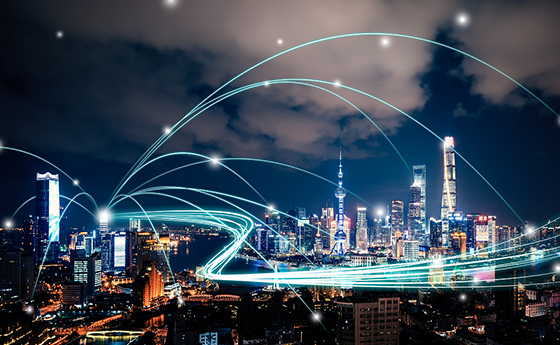guide: It can be said that the Internet of Things has become ubiquitous, and people no longer question the connectivity and intelligence added to devices.
Nowadays, people's lives are becoming more and more connected. Not so long ago, digital assistants, smart homes, etc. existed only in science fiction. Consumers are beginning to see the Internet of Things (IoT) expanding into more and more aspects of their daily lives. It can be said that the Internet of Things has become ubiquitous, and people no longer question the connectivity and smart features added to devices.
From a business perspective, the spread of the Internet of Things presents unique challenges and opportunities that businesses must overcome or embrace. As employees become more reliant on connected devices and technology moves into more unexpected areas, businesses must balance the needs of consumers and employees with those of shareholders. So, here are our predictions for the future development of the Internet of Things.

ESG is not going away anytime soon
While environmental social governance (ESG) has been a global political hotspot of late, the focus on the future environmental stewardship of the planet is not going away in the near future. Businesses will begin to take a hard look at their ESG initiatives and realize that the first step to managing an effective ESG program is to understand the nuances that make up their total carbon footprint. To do this, they need data. Not just their own operational data, but also the operational data of their suppliers and sellers.
The Internet of Things (IoT) also provides these enterprises with valuable data to minimize their overall environmental impact. The next trend in ESG will leverage IoT-generated data to enhance products and processes, thereby creating a positive impact on ESG initiatives. IoT devices can establish a continuous positive feedback loop—for instance, when integrated with machine learning (ML), they enable predictive analytics and optimize device control for maximum efficiency. This growing need for interconnected IoT devices leads us to the next two major predictions for 2023.
Satellite connectivity is no longer limited to specialized or expensive equipment. Whenever a connection is needed from fixed installations, satellites can provide seamless linking while offloading partial traffic to different frequency bands. Although the prospects for nationwide mobile communication technologies are promising, satellite networks remain indispensable in remote areas.
Smart cities are expected to be one of the biggest adopters of this shift to satellite communications, especially with the introduction of new satellite networks that support standard 3GPP cellular connectivity, making them cellular towers in the sky. Building a smart city IoT around satellite communications eliminates the need for expensive hard-wired IoT networks or increased local cellular congestion. There will also be a major shift in the cellular side of communications.
The widespread adoption of software-based SIM or eSIMs will represent a fundamental shift in the mobile connectivity industry. Manufacturers are beginning to adopt eSIMs for various reasons. First, integrating a SIM on the chip will reduce manufacturers' overall carbon footprint. They will no longer need to produce physical SIM cards, which often become waste long before the devices they were originally used in are discarded. Additionally, this will eliminate the requirement to create SIM trays in devices, thus streamlining the design and production process and reducing overall costs.
Finally, one of the biggest benefits of switching to eSIMS is that they offer a higher level of security than physical SIMs. Since eSIMs are remotely configured, it eliminates the possibility of SIMs as threat vectors.
It may sound cliché at this point, but cybersecurity will remain at the forefront of business decision-making. What's different this year is the rise of artificial intelligence (AI) and machine learning (ML).
AI and ML are making malicious actors more efficient and potentially more effective in their attacks. Natural language models like ChatGPT open up new avenues of attack and lower the overall barrier to creating effective malicious code.
Moreover, the evolving legislative environment around privacy will prompt companies to take a hard look at how they collect, use and retain sensitive personal data, which may require a complete redesign of products, processes or indeed entire business models.
Finally, it is no secret that the skilled labor market is in turmoil. Many businesses are reducing or limiting their workforce in pursuit of efficiency or profit. The exodus of talented technical professionals has created a serious knowledge gap that must be addressed.
Managed service providers will step in and offer expertise on an as-a-service basis. This will enable enterprises to purchase the skills and expertise they need without shouldering the additional overhead of hiring and training extra staff. Finally, it will also allow enterprises to focus on their key objectives while enabling experts to manage the technology behind the scenes.
The IoT landscape will change significantly in 2023, but these changes will ultimately be influenced by the needs of individual businesses. Businesses will continue to leverage IoT to improve operational efficiencies, ESG initiatives, and end-user experiences. They will also adopt and scale the latest technologies such as AI and ML, while striking a balance between security and privacy. Businesses will also address critical skills gaps due to economic uncertainty by adopting as-a-service solutions.